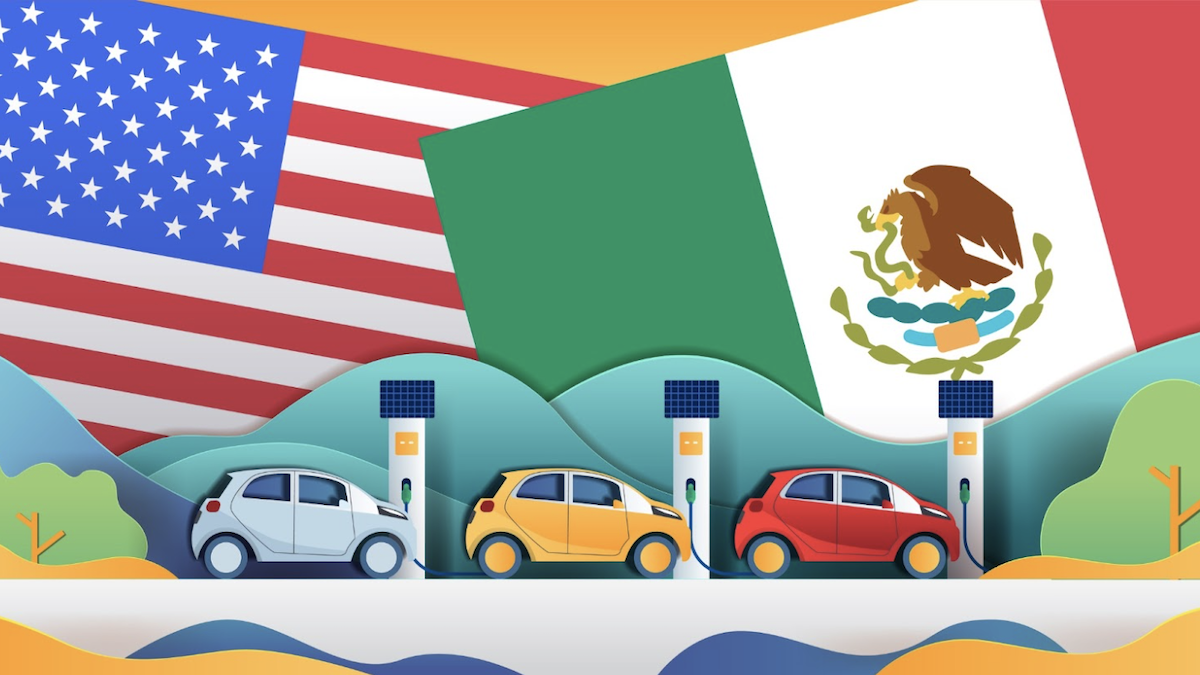Tariffs, Transitions, and Trade: Mexico’s EV Gambit
The North American automotive industry is undergoing a transformation driven by the electric vehicle (EV) transition, post-pandemic supply chain shifts, and increasing US protectionism. As the largest vehicle supplier to the US, Mexico faces both opportunities and risks in this evolving landscape. With 42% of its passenger vehicle production tied to US automakers and nearly 70% of its total output destined for the US, Mexico’s automotive industry is particularly vulnerable to the recently announced 25% tariffs on Mexican auto imports. But Mexico has an opportunity to reduce the risks its auto industry faces by pivoting to supplying growing domestic and Latin American markets with the advanced, electric-drive vehicles that meet the needs of those countries.

Background
Mexico’s automotive sector flourished under the North American Free Trade Agreement (NAFTA) and later the US-Mexico-Canada Agreement (USMCA). However, efficiency-driven free trade policies have reshaped supply chains, shifting US manufacturing abroad and fueling economic discontent. The US, now reliant on imports for 47% of its vehicle market, has prioritized industrial policies to restore domestic manufacturing. This shift was reinforced by the Inflation Reduction Act (IRA) of 2022, which promotes regional EV supply chains. As the current administration imposes more protectionist policies, Mexico must find ways to maintain its competitive edge in the global EV supply chain while reducing its dependence on the US market.
Industry Response to Tariffs
The proposed tariffs have prompted major automakers with substantial operations in Mexico such as GM, Ford, Stellantis, and Nissan to reassess their production strategies. US automakers had already begun shifting supply chains closer to home to qualify for IRA tax credits, but the additional tariff threat has intensified localization pressures. In response, Mexico’s auto industry associations are actively negotiating exemptions to mitigate the impact, while President Sheinbaum’s administration is developing policy measures to safeguard the sector.
Mexico’s Policy Response and Growth Opportunities
Rather than merely reacting to tariff risks, Mexico can seize the moment to strengthen its position in the EV market. Negotiations are underway to secure exemptions for key EV components, but Mexico is also proactively investing in industrial strategies such as “Plan Mexico” and the “Olinia” EV project to bolster its domestic manufacturing and strengthen its market. The government also recently launched the “Made in Mexico” campaign, designed to increase domestic consumption and reduce reliance on exports.
However, Mexico could also benefit from looking beyond the US and tapping into new regional opportunities. Latin America is emerging as one of the world’s fastest-growing vehicle markets, with countries across the region committing to electric mobility and investing in EV infrastructure. Mexico’s proximity and strong manufacturing base position it as a natural supplier to meet this growing demand. By strengthening regional trade ties, Mexico can hedge against US trade volatility while fostering industrial growth across Latin America.
Unlocking Mexico’s Potential in the EV Era
Mexico’s EV production currently lags behind its internal combustion engine vehicle (ICEV) output, contributing only 10% of U.S. EV sales. Mexico’s EV production currently trails its internal combustion engine vehicle (ICEV) output, accounting for just 10% of U.S. EV sales. Trade simulations using the Model for iNternational EV Trade (MONET) suggest that, to maintain its global market share under current trade dynamics by 2035, Mexico would need to shift 46% of its ICEV production to EVs and increase overall light-duty vehicle (LDV) output by 8%. However, strengthening trade ties with Latin America could boost Mexico’s total production by 22% and increase industry sales revenue by 12%, from $125 billion to $140 billion. This would reduce dependence on the U.S. market while supporting the region’s growing demand for EVs.
These scenarios underscore the importance of Mexico’s strategic decision-making. By shifting toward EV production and diversifying its market Mexico could strengthen its position in the global automotive market and better respond to evolving regional demand.
Building a Resilient EV Supply Chain
Mexico’s long-term success in the EV sector depends on its ability to build a robust and resilient supply chain. Investing in domestic production through “Plan Mexico” and “Olinia” will ensure that Mexican and Latin American consumers have greater access to EVs. Expanding lithium and battery production—leveraging Sonora’s mineral reserves for extraction, manufacturing, and recycling—will be critical for securing supply chains.
At the same time, Mexico must carefully manage its economic relationship with China. While Chinese EV investments could accelerate industrial growth, geopolitical risks require a cautious approach to avoid potential US trade retaliation. Strengthening regional supply chains within Latin America could provide an alternative to dependence on China, fostering a more sustainable and politically stable industrial ecosystem.
Conclusion
Mexico stands at a crossroads in the global EV supply chain. By diversifying trade partnerships, strengthening its domestic EV market, and strategically navigating geopolitical tensions, Mexico can mitigate tariff risks while reinforcing its role as a leading EV manufacturing hub in the Americas.
Further reading: https://www.oxfordenergy.org/publications/2025-evs-and-battery-supply-chains-issues-and-impacts-issue-144/
–
Francisco Pares Olguin is a Ph.D. candidate in Energy Systems at ITS-Davis
Roland Hwang is Policy Director at ITS-Davis
Thank you for your interest in the UC Davis Institute of Transportation Studies. Subscribe today to keep up with the latest ITS news and happenings.
